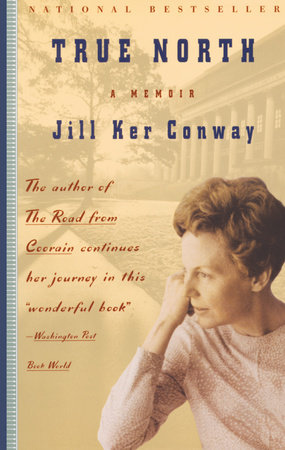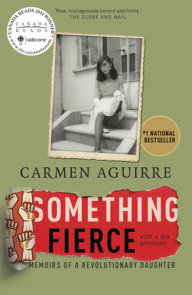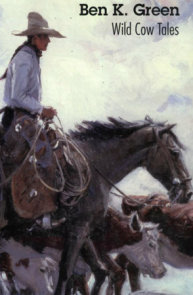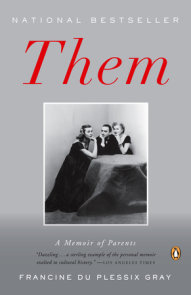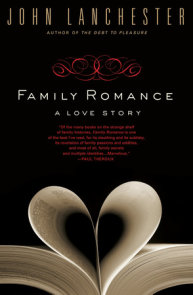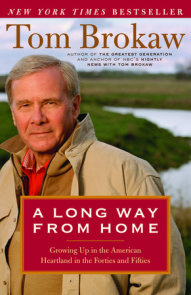READERS GUIDE
The questions, discussion topics, and author biography that follow are intended to enhance your group’s reading of Jill Ker Conway’s True North, the second volume of her autobiography. We hope they will enrich your understanding of the many themes that Conway weaves into the narrative that begins where The Road from Coorain, the story ofher childhood and early youth, ended.
Introduction
Conway begins this second volume with her departure from Australia and her ambivalent feelings toward the character and traditions of her native country. She settles temporarily in the United States and enters Radcliffe College as a graduate student in history, finding there, for the first time in her life,a community of intellectual women. Realizing that she has a true vocation as a historian, Conway develops her gifts as a thinker and educator. She marries John Conway, a fellow historian, and leaves with him for Canada, where she finds a teaching position at the University of Toronto. She eventually becomes a Vice President of the University, and while writing and researching the lives of activist women, she herself develops into an activist, fighting for improved opportunities and conditions for women in higher education. The narrative ends in 1974, with Conway about to begin a new job. As the first woman president of Smith College, she will work to defend the embattled tradition of the all-women’s college in an era when coeducation has become widely accepted as the cultural ideal.
Questions and Topics for Discussion
1. Conway comes to think of her work as a "vocation" almost in the religious sense of the word. What importance does Conway assign work in a woman’s life? Does she consider it more important than love, or less so? How does she reconcile work with the somewhat abstract concept of duty? In what way does she redefine her ideas of duty as she grows up? How do she and her Radcliffe roommates cope with their feelings of guilt at being "different"? Does Conway succeed in turning her sense of guilt into constructive channels? How?
2. Conway’s narrative opens with her being accepted into a liberating community of young women and closes with her departure to conserve and foster another such community. How does Conway use this frame to shape the various themes of the autobiography? How does she balance the story of her own formation as an individual with that of her coming to identify herself as part of a group?
3. "Every verbal and visual message of the world I’d grown up in telegraphed that a young female belonged with somebody else…anything that would signal to the world that she was going about the business of being a helpful and charming female bent on caring for the needs of others" [p. x]. Here Conway is speaking of Australia in the 1950s. How different is the society she encounters in the United States? How are American attitudes toward women symbolized in the professional fates of her roommates Barbara and Jana?
4. Upon her arrival in New England, Conway is much struck with its Puritan tradition; essential contradictions, she notes, are implicit in a society "devoted to the pursuit of happiness" [p. 21] yet ruled by the "Puritan fear of the world, and of earthly beauty" [p. 21]. How do these New England moral preoccupations differ from those she encounters in Canada? How do they differ from the Australian ethos, with its stoicism and cult of death?
5. Is it possible to explain Mrs. Ker’s violent response to her daughter’s engagement in social as well as psychological terms? How does her valuation of her daughter as an economic asset compare with the centuries-old tradition of looking on women as property?
6. How does the book’s title convey the essential quality of Jill and John Conway’s marriage? Do the intellectual and spiritual bonds shared by the Conways differ significantly from those in more traditional marriages? If so, how? Do you find the Conways’ romance unusual, nontraditional? Or should their ideals of mutual respect and equality be essential ingredients in any successful marriage?
7. "I thought of my mother, with her strong managerial ability, her drive for power, her restless energy, sitting alone in her neat suburban house, schooled to believe she shouldn’t be in business, or running an organization" [p. 161]. To what extent does Mrs. Ker function as a cautionary example for her daughter? How does she inspire (albeit negatively) Conway’s quest for knowledge? Is it possible that Conway’s swift professional progress is to some degree driven by a fear of being caught in the same traps that have destroyed her mother?
8. How is Conway’s thinking about the opposing virtues of action and endurance developed during her husband’s intense battle with mental illness? How does this ordeal differ from, or resemble, ordeals she has had to undergo in the past? Are the resources of Australian stoicism sufficient to her emotional needs?
9. Conway points out that "the dream of a genuine community of scholars, mediating the conflict between generations, linking young and old in a mutually loving quest for knowledge, has inspired ideas about academic communities since Greek times" [pp. 157-58]. To what extent are Conway and her women friends able to establish such a community at Harvard/Radcliffe? Do the universities of Harvard and Toronto foster or hinder the creation of such utopias? How does this ideal direct Conway’s career as an administrator?
10. As Vice President of the University of Toronto, Conway began to understand "why the great medieval historians had studied institutions. They had a life of their own" [pp. 226-27]. How might Conway’s new understanding of the University affect her vision as a historian? In what way is the University of Toronto, as Conway describes it, representative of the larger society?
11. How does Conway’s success in administrative work help her to understand her own character and abilities? Conway ruefully compares her lack of self-knowledge with that of Jane Addams and her other subjects. She explains the cultural reasons for Addams’s self-deception. What do you see as the cultural reasons for Conway’s own self-deception?
12. How does Conway present the arguments for women’s colleges versus coeducation? Are her arguments persuasive? Is her use of the nineteenth-century models of Oberlin and Mt. Holyoke a valid one? Do you feel that the arguments for or against single-sex education have substantially changed in the twenty years since Conway began her work at Smith College? Do women’s colleges, as Conway believes, embody "important aspects of modernity" [p. 248]?
13. How does Conway’s way of looking at history differ from the diplomatic and constitutional model she learned as a child? In your view, is this change in outlook representative of a general change in the way we have come to look at history? How does Conway’s historical vision help her in understanding the peculiarities of the Australian, American, and Canadian national characters and institutions? How did it affect her view of the Vietnam war?
14. How does the beauty and variety of the natural world–both in her native Australia and her adopted countries of Canada and the United States–affect Conway’s life and her personal decisions? How does she use the theme of nature to structure her autobiography?
15. How does Canadian political philosophy, as described by Conway, differ from that of the United States? How has the country’s geography affected this philosophy? What differences does Conway see between Canadian and American standards of civic virtue and communal responsibility? How does "the Canadian sense of romanitas, the sense of the law and traditon as the basis of civilized society," [p. 136] compare with the American ideal of individual rights?
16. What do you learn from Conway’s experience of expatriation? As an expatriate, does she feel alienation, or personal growth and enrichment? Or both? What contributions can the thoughtful expatriate make to society in today’s world of barbaric nationalistic wars?
17. Conway discovers that although Jane Addams and the other great women reformers she is studying were all extremely forceful characters, each wrote about herself as "the ultimate romantic female, all intuition and emotion" [p. 150]. How does Conway explain this phenomenon? Do you agree with her explanation? How does Conway’s own self-presentation differ from this model? If Addams’s autobiography is written with a 1910s readership in mind, is Conway’s written with a 1990s readership in mind? If so, how does she address the 1990s reader’s expectations?
About this Author
Jill Ker Conway was born in Hillston, New South Wales, Australia, in 1934. Her father was a sheep rancher, her mother a nurse, and Conway and her brothers were brought up in almost total isolation on Coorain, their 18,000-acre tract of land, which was eventually enlarged to 32,000 acres. With the unexpected death of her husband, on top of a devastating drought, Mrs. Ker was compelled to leave Coorain with her family for Sydney, where they led a relatively conventional middle-class life. Jill was educated at the all-female Abbotsleigh School and the University of Sydney, where she took an honors degree in history.Conway emigrated to the United States in 1960, and completed her Ph.D. at Harvard University in 1969. As a historian she specialized in American social and intellectual history, and in her own private intellectual concern, the history of American women. She taught at the University of Toronto from 1964 to 1975, where she eventually became vice-president; she then spent ten years as the president of Smith College, the first roman to hold that position.
Since 1985 she has been a visiting professor at M.I.T. in its Science, Technology and Society program.









